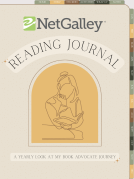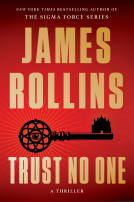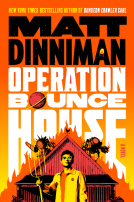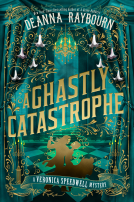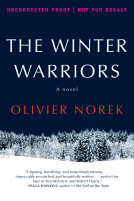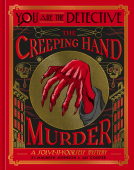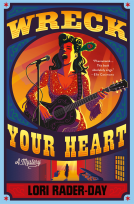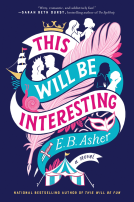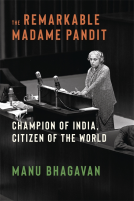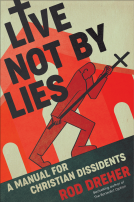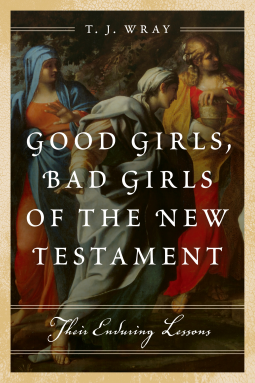
Good Girls, Bad Girls of the New Testament
Their Enduring Lessons
by T.J. Wray
This title was previously available on NetGalley and is now archived.
Buy on Amazon
Buy on BN.com
Buy on Bookshop.org
*This page contains affiliate links, so we may earn a small commission when you make a purchase through links on our site at no additional cost to you.
Send NetGalley books directly to your Kindle or Kindle app
1
To read on a Kindle or Kindle app, please add kindle@netgalley.com as an approved email address to receive files in your Amazon account. Click here for step-by-step instructions.
2
Also find your Kindle email address within your Amazon account, and enter it here.
Pub Date Mar 01 2016 | Archive Date Mar 11 2016
Description
Good Girls, Bad Girls of the New Testament
takes readers on a powerful journey through the vast landscape of
Roman-occupied Judea during the first century and the genesis of
Christianity. This landscape serves as the backdrop for twelve amazing
stories of women whose paths intersect, either by providence or design,
with the paths of Jesus or Paul. Some of these women are familiar, such
as Mary, the mother of Jesus, while others, like the wife of the
infamous Pontius Pilate, are lesser known. Whether she is popular or
obscure, good or bad, each woman’s story is an important part of the
overall Christian narrative.
Good Girls, Bad Girls of the New Testament invites readers to take a more nuanced look at twelve stories that feature women, to explore their lives more deeply in historical context, and to understand the real story that includes both men and women. The book goes beyond simply telling the story of a particular biblical woman to challenge readers to explore the enduring lessons the ancient writer sought to impart. These timeless lessons are as important for us today as they were thousands of years ago.
T. J. Wray is the author of several books, including Surviving the Death of a Sibling, What the Bible Really Tells Us, and Good Girls, Bad Girls: The Enduring Lessons of Twelve Women of the Old Testament. She is associate professor of religion at Salve Regina University. She has been interviewed on The History Channel and NPR.
Good Girls, Bad Girls of the New Testament invites readers to take a more nuanced look at twelve stories that feature women, to explore their lives more deeply in historical context, and to understand the real story that includes both men and women. The book goes beyond simply telling the story of a particular biblical woman to challenge readers to explore the enduring lessons the ancient writer sought to impart. These timeless lessons are as important for us today as they were thousands of years ago.
T. J. Wray is the author of several books, including Surviving the Death of a Sibling, What the Bible Really Tells Us, and Good Girls, Bad Girls: The Enduring Lessons of Twelve Women of the Old Testament. She is associate professor of religion at Salve Regina University. She has been interviewed on The History Channel and NPR.
A Note From the Publisher
This is a set of uncorrected page proofs. It is not a finished book and is not expected to look like one. Errors in spelling, page length, format and so forth will all be corrected by the time the book is published several months from now. Photos and diagrams, which may be included in the finished book, may not be included in this format. Uncorrected proofs are primarily useful so that you, the reader, might know months before actual publication what the author and publisher are offering. If you plan to quote the text in your review, you must check it with the publicist or against the final version. Please contact publicity@rowman.com with any questions. Thank you!
Marketing Plan
Table of Contents
Introduction
Life for Women During New Testament Times
Section One: Sisters, Sinners and SupportersChapter 1: Sister Friends: Martha and Mary of Bethany
Chapter 2: Suspicious Sisters: Bernice and Drusilla, the Great-Granddaughters of Herod the Great
Chapter 3: Caught in the Act: The Adulterous Woman in John’s Gospel
Chapter 4: Blood Guilt: The Woman With a Twelve-Year Hemorrhage
Chapter 5: A Woman of Substance: Mary Magdalene
Chapter 6: Widow’s Rising: Tabitha, A Loving Benefactor
Section Two: Mothers, Murderers, and MissionariesChapter 7: Angelic Gift: Elizabeth, Mother of John the Baptist
Chapter 8: Jesus’ Mom: Mary of Nazareth
Chapter 9: Off With His Head! Herodias and the Beheading of John the Baptist
Chapter 10: I Had a Dream: The Wife of Pontius Pilate
Chapter 11: Spreading the Good News: Prisca, a Missionary of Paul
Chapter 12: A Conversation With Jesus: The Woman at the Well
Chapter 13: Concluding Thoughts
Resources
Index
Introduction
Life for Women During New Testament Times
Section One: Sisters, Sinners and SupportersChapter 1: Sister Friends: Martha and Mary of Bethany
Chapter 2: Suspicious Sisters: Bernice and Drusilla, the Great-Granddaughters of Herod the Great
Chapter 3: Caught in the Act: The Adulterous Woman in John’s Gospel
Chapter 4: Blood Guilt: The Woman With a Twelve-Year Hemorrhage
Chapter 5: A Woman of Substance: Mary Magdalene
Chapter 6: Widow’s Rising: Tabitha, A Loving Benefactor
Section Two: Mothers, Murderers, and MissionariesChapter 7: Angelic Gift: Elizabeth, Mother of John the Baptist
Chapter 8: Jesus’ Mom: Mary of Nazareth
Chapter 9: Off With His Head! Herodias and the Beheading of John the Baptist
Chapter 10: I Had a Dream: The Wife of Pontius Pilate
Chapter 11: Spreading the Good News: Prisca, a Missionary of Paul
Chapter 12: A Conversation With Jesus: The Woman at the Well
Chapter 13: Concluding Thoughts
Resources
Index
Available Editions
| EDITION | Hardcover |
| ISBN | 9781442219373 |
| PRICE | $26.95 (USD) |
Average rating from 17 members
Readers who liked this book also liked:
You Are the Detective: The Creeping Hand Murder
Maureen Johnson; Jay Cooper
Entertainment & Pop Culture, Mystery & Thrillers
Maureen Johnson; Jay Cooper
Entertainment & Pop Culture, Mystery & Thrillers

